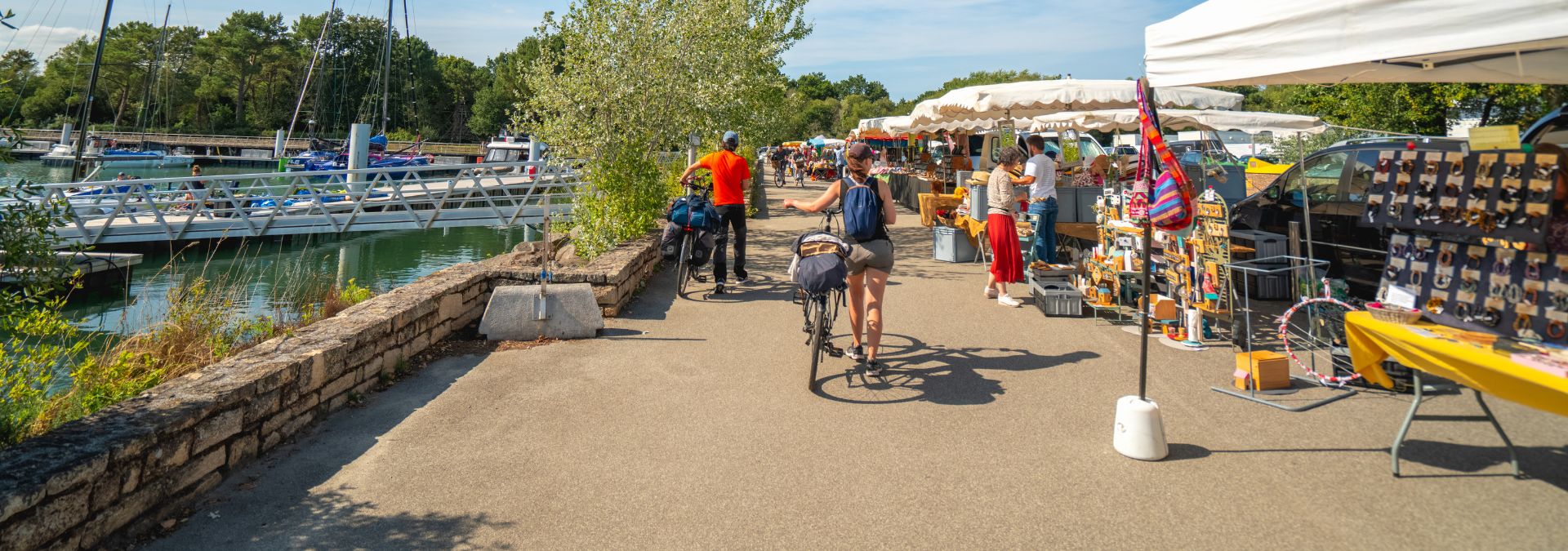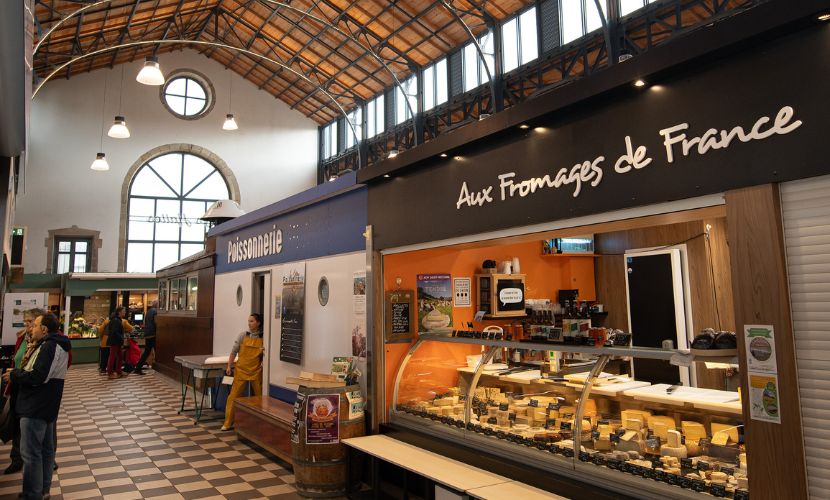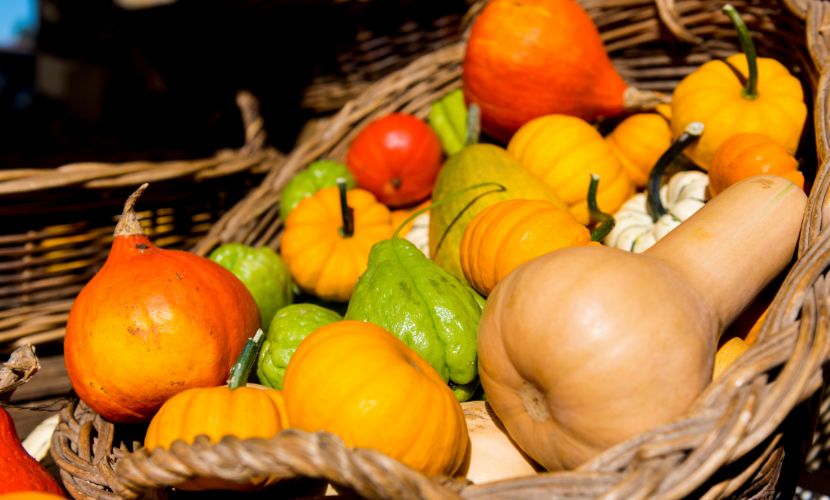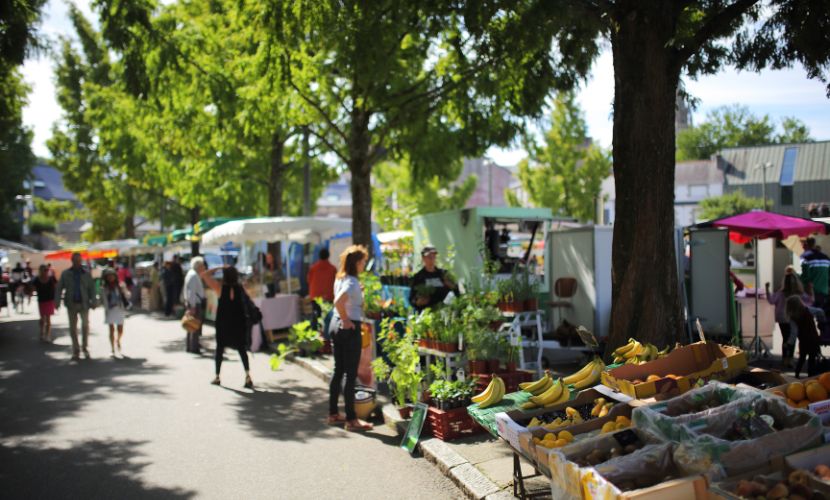
Typical market halls in the heart of the town
In the Middle Ages, market halls were known as ‘cohues’, a word that originally came from the Breton word ‘koc’hue’ meaning covered market. Those original markets were lively and bustling affairs, often organised by local guilds, and these would include butchers’ alley, fishmongers’ corner and bakers’ corner, while other markets could be dedicated to a single trade, as with the grain market in Morlaix.
Plouescat is one of Brittany’s last remaining wooden market halls. Built in the late 1500s, these halls are now listed as an historic monument. In Quimperlé, the market halls are made from wrought-iron and brick, decorated with cast-iron and steel ornamentation. Those in Pont-l’Abbé are also well worth a visit, with their beautiful Eiffel-style framework. Today, as in days gone by, market halls are a pleasure to stroll around and are still at the heart of the community.
Local farmers’ markets
Regular, seasonal or one-off events, local farmers’ markets showcase the richness and diversity of local produce. Shopping here is not only a guarantee of finding ultra-fresh produce, but also gives you the chance to meet the farmers and market-gardeners. It’s a chance to chat, to learn more about the produce and how it’s grown and processed. These markets are known as ‘Marchés de Producteurs de Pays’.
To find them all, click here:

 Markets near you
Markets near you



